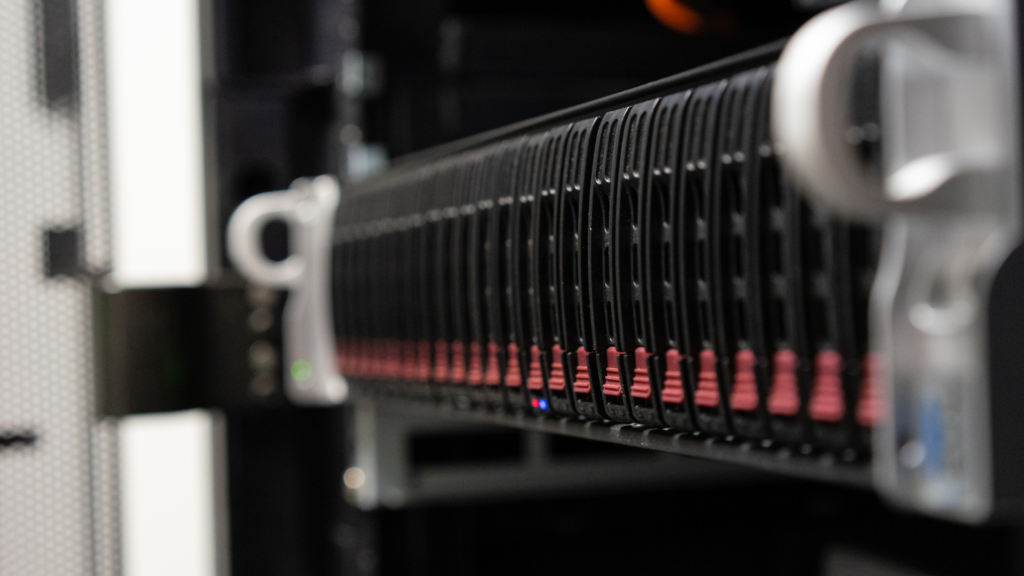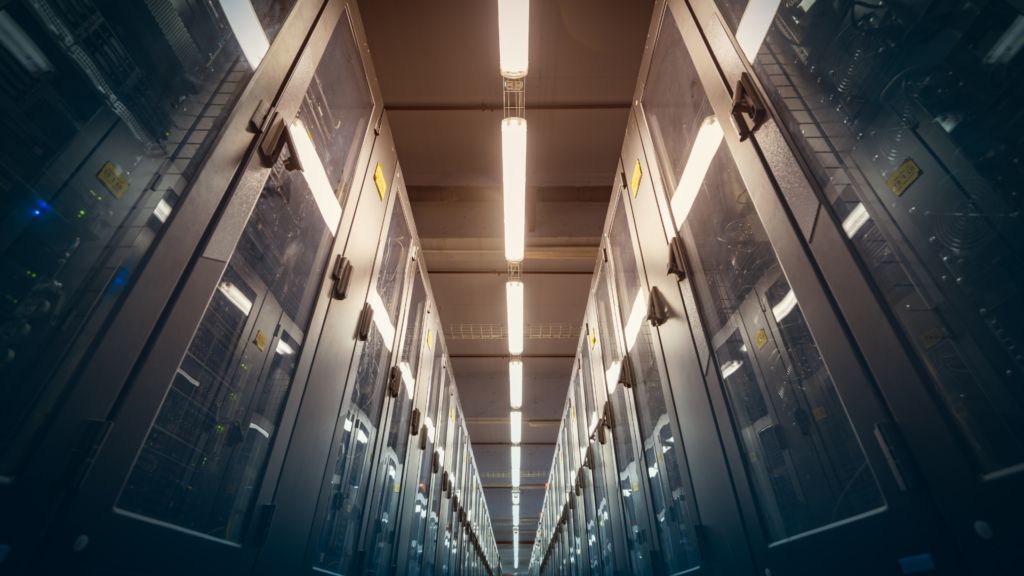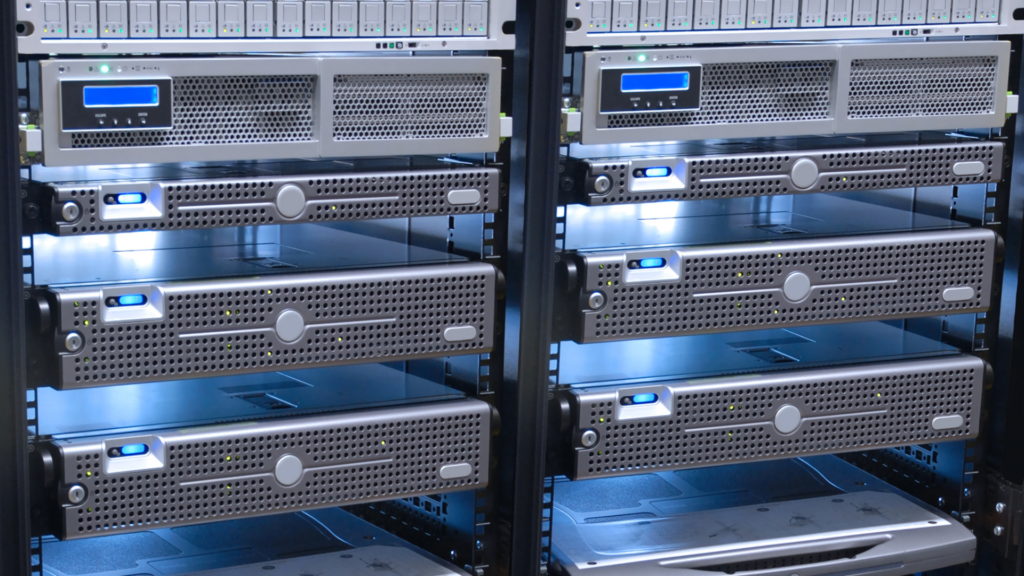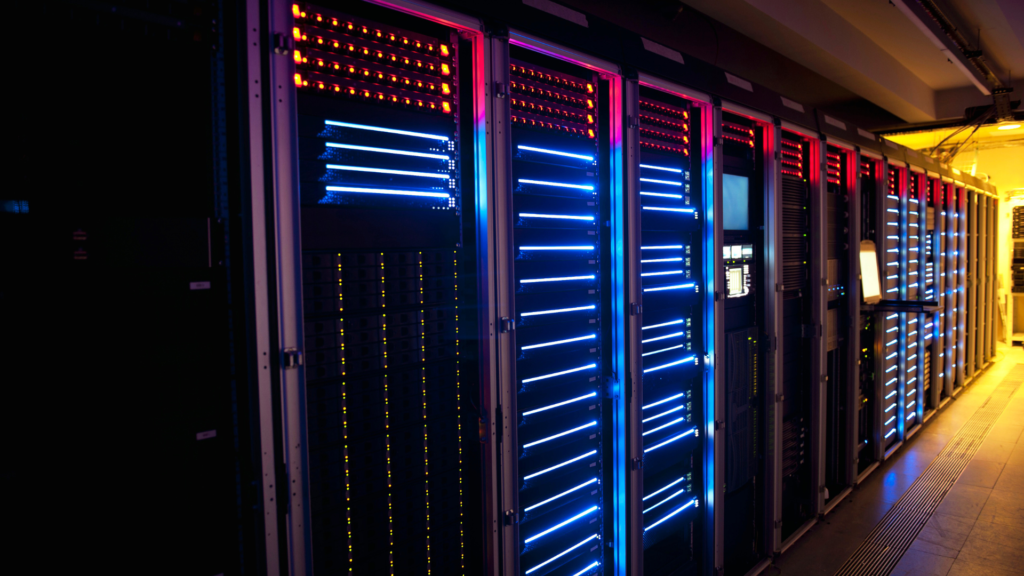
Table of Contents
What is a Bare Metal Server?
Navigating the maze of server options can be daunting, especially when faced with technical and seemingly abstract terms. What is a bare metal server? How can it benefit your business? Dive into this article as we demystify this powerhouse of direct hardware access and compare its capabilities against other popular server choices.
Key Takeaways
A Bare metal server is a physical server dedicated to a single tenant.
Bare metal servers are a competitive and complementary technology to colocation, virtual private servers, and cloud.
While bare metal servers offer performance and dedicated resources, they might lack the scalability and flexibility inherent in virtualized environments.
Brightlio is your partner of choice for bare metal server pricing globally.
Defining Bare Metal

A bare metal server is a physical server dedicated to a single tenant without any virtualization layers. It provides direct access to the server’s hardware resources, such as CPU, memory, storage, and network capabilities, allowing the tenant’s applications and operating system to harness the server’s full power without interference from hypervisors or other virtual machines.
Bare metal servers typically live in a provider’s data centers. The provider is responsible for the maintenance and upkeep of the hardware. They are also responsible for providing the space, power, and network connectivity. With a bare metal, you are paying for dedicated server resources like a utility. The provider’s service level agreement (SLA) guarantees uptime and performance.
The Anatomy of a Bare Metal Server
A bare metal server’s architecture is inherently simple, yet robust, making it a go-to choice for many performance-critical applications. Let’s delve deeper into its key components:
Physical Hardware: At the heart of a bare metal server are its physical components. These include:
CPU (Central Processing Unit): This is the brain of the server, responsible for executing commands. On a bare metal server, the CPU isn’t shared, ensuring maximum processing power.
Memory (RAM): This temporary storage area is where the server processes data. Without virtualization, a bare metal server can utilize all available RAM more effectively.
Storage: Whether using HDDs (Hard Disk Drives) or SSDs (Solid State Drives), the storage on a bare metal server is direct and often faster, as there’s no hypervisor mediating access.
Networking Components: NICs (Network Interface Cards), switches, and other networking hardware determine the speed and efficiency of data transfer.
BIOS and Firmware: Often overlooked, the BIOS (Basic Input/Output System) and firmware on bare metal servers can be optimized for specific workloads. This allows for even more granular control and performance tuning.
Whether it’s for a high-end gaming server, a crucial database server, or latency-sensitive applications, the raw power and direct access of bare metal are hard to match.
Colocation, VPS, and Cloud vs. Bare Metal

To better understand where bare metal sits in the technology ecosystem, let’s explore the competing and complimentary technologies of colocation, virtual private servers, and cloud.
Colocation vs. Bare Metal
Colocation involves housing privately-owned servers and networking equipment in a third-party data center. The colocation provider delivers the space, power, cooling, and network connectivity. Customers are typically responsible for purchasing and maintaining their own servers and storage capacity.
Bare metal includes the benefits of data center colocation, but adds server hardware as part of the service. The service provider is responsible for the maintenance and uptime of the server. The hardware is also delivered as a service, making it an operational expense, rather than a capital expense.
Virtual Private Servers (VPS) vs. Bare Metal:
VPS hosting leverages a hypervisor to create multiple virtualized servers on a single physical machine.
The system allocates distinct virtual environments to users, with each one emulating a standalone server. They have the flexibility to choose their operating system and adjust their resource allocation, but they share the underlying physical resources with other VPS tenants.
Bare metal servers, in contrast, provide a dedicated physical environment. They combine the exclusive access of owning a physical server with the operational advantages of a managed service. Instead of sharing resources and potentially facing performance issues due to virtualization overhead, clients get the full capacity of the server. VPS services are typically less expensive, while bare metal services typically offer better performance.
Cloud vs. Bare Metal:
Cloud computing offers an abstracted layer where users can provision and manage resources from a vast pool, often distributed across multiple locations. Its design offers high scalability and flexibility to cater to both small and large-scale operations. Providers typically bill resources based on usage, and users often lack direct control or knowledge of the specific physical infrastructure that supports their operations.
Bare metal servers, on the other hand, strip away this abstraction, giving users direct access to a server. While cloud solutions dynamically scale based on demand, bare metal delivers consistent, predictable performance. Bare metal also gives users full access to the resources of the server for a fixed monthly price. This eliminates the uncertainty of variable billing in the cloud service model.
Advantages of Bare Metal Servers

Bare metal servers provide a range of benefits such as enhanced performance, increased security, and extensive customization options. Their dedicated resources and physical separation from other tenants eliminate the “noisy neighbor” effect, ensuring better performance.
Bare metal servers also provide enhanced security through physical isolation, which is unavailable on virtual private servers (VPS) or shared hosting. Additionally, extensive customization options allow you to fine-tune hardware and software configurations to meet specific needs.
Performance
Bare metal servers stand out for their exceptional performance. By providing dedicated resources and eliminating the “noisy neighbor” effect, bare metal servers ensure that your applications and workloads have exclusive access to the resources they need, resulting in better performance.
This is particularly beneficial for high-performance computing tasks, such as AI, machine learning, and big data processing, which require maximum performance and minimal latency.
Security
Bare metal servers offer distinct security advantages due to their inherent nature of dedicated resource allocation. Unlike shared or virtualized environments, where multiple tenants reside on a single physical machine, bare metal servers cater to a single user or entity, ensuring complete isolation from malicious users. This segregation greatly reduces the risk of cross-tenant breaches or vulnerabilities that might arise in multi-tenant setups.
Furthermore, without the overhead of a hypervisor, there are fewer layers and entry points for potential attacks. Organizations have full control over the server’s security configurations, allowing for the implementation of tailored security protocols, stringent firewall rules, and custom monitoring without the constraints or potential vulnerabilities of shared environments. This direct access and control, combined with dedicated resources, make bare metal servers a preferred choice for security-conscious organizations.
Customization
Bare metal servers provide you with a wide array of customization options, enabling you to adapt the hardware and software configurations to your unique needs. With full control over the server environment, you can choose bare metal servers with the operating system, hardware components, and software applications that best suit your requirements on bare metal systems.
This level of customization enables you to optimize your server for performance, security, and reliability, ensuring that your applications and workloads run smoothly and efficiently.
Disadvantages and Limitations

Notwithstanding their many benefits, bare metal servers also have some disadvantages and limitations. These include higher costs, limited scalability, and longer deployment times compared to virtualized environments.
Cost
The relatively higher cost compared to VPS is one of the primary drawbacks of bare metal servers. Due to their dedicated resources and upfront investments in hardware provisioning and customization, bare metal servers can be more expensive than virtualized alternatives.
However, the superior performance and security provided by bare metal servers may justify the higher cost for businesses with demanding workloads or strict security requirements. Contact Brightlio if you’re interested in bare metal server pricing. We have a global service provider network that can deliver server resources to meet your needs and budget.
Scalability
Compared to virtual machines that can be provisioned swiftly and effortlessly, scaling with bare metal servers can pose more challenges. Expanding the resources on a bare metal server requires purchasing more physical hardware. This leads to potential manual intervention and possible longer deployment times. As a result, businesses with fluctuating resource requirements may find it more difficult to scale their infrastructure using bare metal servers.
Deployment Time
Owing to hardware provisioning and customization requirements, bare metal servers may take longer to deploy than virtual machines. While virtual machine servers can be deployed in a matter of minutes, deploying a bare metal server can take several hours or even days, depending on the level of customization needed. This longer deployment time may be a drawback for businesses that require rapid server provisioning and deployment.
That said, most dedicated server providers list what servers are currently available in their data center. If you choose from readily available hardware, deployment times for your bare metal environment can be closer to that of shared hosting servers or cloud hosting.
Use Cases for Bare Metal Servers

For a variety of industries and applications like high-performance computing, the gaming industry, and healthcare and finance sectors, bare metal servers are an ideal choice. The powerful performance, security, and customization features of bare metal servers make them well-suited to meet the unique needs of these industries, ensuring that their applications and workloads run smoothly and efficiently.
High-Performance Computing
High-performance computing tasks, such as AI, machine learning, and big data processing, require the power and performance that bare metal servers offer. With dedicated resources and no “noisy neighbor” effect, bare metal servers can deliver the performance needed for these demanding workloads, ensuring that data is processed quickly and accurately. This makes them an ideal choice for businesses in industries that rely on high-performance computing.
Gaming Industry
The gaming industry requires high performance, low latency, and flexibility, making dedicated servers, especially bare metal servers, an ideal choice for game server hosting, real-time communications, and other demanding workloads. With dedicated resources and customizable hardware and software configurations, bare metal servers can deliver the performance needed to ensure a smooth and enjoyable gaming experience for players around the world.
Healthcare and Finance
The healthcare and finance sectors prioritize security and compliance, making bare metal servers a suitable option for hosting sensitive data and applications. With physical isolation from other tenants and customizable firewall settings, bare metal servers offer a secure environment that meets the stringent security requirements of these industries. This ensures that sensitive data remains protected, and businesses can maintain compliance with industry regulations.
Choosing a Bare Metal Server Provider

There are many bare metal server providers in the market today. Here are a few tips on picking the best provider for your needs.
Understand Your Requirements
Providers offer a wide array of bare metal server options. Some are based on the latest server hardware. Others leverage older-generation hardware aimed at a lower price point. Understand your technical needs and budget to pick a provider that offers the best options for your business.
Location
Latency is often an important consideration when dedicated services. Some providers offer a global server footprint, while others may only have a single location. Having a long term roadmap for your server infrastructure can help you pick a provider that offers services in the markets you care about.
Network Quality
Another vital consideration when selecting a bare metal server provider is the quality of the network. A high-quality network with fast response times and minimal latency is essential for ensuring optimal performance and user experience. To assess network quality, you can test the provider’s network connectivity and latency, ensuring that they can deliver the speed and reliability your business requires.
Support
Support is a critical component to your experience with a provider. If there are issues with your server, the provider will be responsible for fixing it. Some key considerations include:
What is the provider’s SLA for responding to trouble tickets and fixing issues?
What credits will you receive in the event of a breach of the SLA?
Does the provider staff their facility 24×7?
Brightlio’s team can provide insight into support of various providers. There are also a number of hosting forums and Reddit groups that offer valuable insight.

Summary
In conclusion, bare metal servers offer a powerful and flexible solution for businesses that require high performance, security, and customization. Despite their higher costs and limited scalability compared to virtualized environments, bare metal servers provide a range of advantages that make them an attractive option for many industries and applications. By carefully evaluating your needs and selecting the right provider and server infrastructure, you can harness the power of bare metal servers to drive your business forward and stay ahead of the competition.
Brightlio Delivers Bare Metal Server Solutions!
Are you interested in a dedicated server for your business? Brightlio can help. Brightlio partners with a global network of bare metal server providers. We can offer bare metal infrastructure in almost any market globally and design solutions to meet your needs and budget. We also offer virtual servers, cloud computing resources, and colocation services, allowing us to service your data center needs.
Brightlio is committed to being your most trusted and most responsive technology partner. Get started today!
Frequently Asked Questions
What does a bare metal server do?
A bare metal server is a physical computer server that provides direct access to its hardware and allows for greater customization, dedicated only to a single tenant. It offers performance, security and reliability tailored to the user’s needs without any resource sharing or sacrificing performance.
What is an example of a bare metal server?
A traditional bare metal server is a dedicated server that runs the user’s chosen operating system, such as Ubuntu, Windows Server, Red Hat, SUSE, CentOS or Debian, and any applications directly run on it.
Why is it called bare metal server?
A bare metal server is so named because it is a dedicated, physical server with no virtualisation or sharing. It is rented by one tenant and contains the customer’s chosen configuration of components for optimum performance.
What is the difference between bare metal and server?
Bare metal servers offer more flexible payment options and access to all internal resources, compared to dedicated servers which typically have a monthly or yearly payment option. Furthermore, bare metal servers provide better performance, since they are not shared with virtual servers like dedicated servers are.
How do bare metal servers differ from virtual servers?
Bare metal servers provide direct access to physical hardware resources while virtual servers are operating within a shared virtualized environment, allowing them to efficiently share resources with other tenants.
Recent Posts
Vancouver Data Centers: Colocation in the Pacific Northwest
Business Broadband Solutions: The Ultimate Guide
Let's start
a new project together



